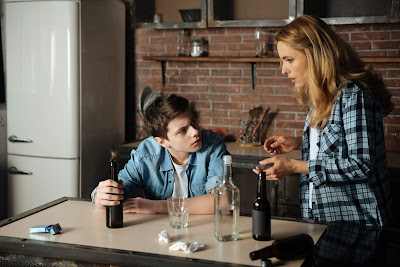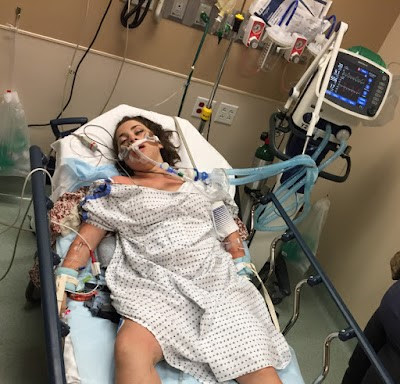Alcohol-related violence: Can it be prevented?
 With yet another teenager in a critical condition in hospital in NSW after being 'king-hit' (that so shouldn't be how we describe this violent act) in Kings Cross, the community is yet again debating what should be done about what appears to be a growing alcohol-related violence problem in this country. What makes this incident so much more distressing is that it happened just metres away from where Thomas Kelly was killed after being punched in a act of senseless violence just months ago. Even today, the NSW Government continues to refuse to make changes to licensing laws, i.e., restricting opening hours and limiting alcohol availability in these nightlife areas, and the community is beginning to lose patience ...
With yet another teenager in a critical condition in hospital in NSW after being 'king-hit' (that so shouldn't be how we describe this violent act) in Kings Cross, the community is yet again debating what should be done about what appears to be a growing alcohol-related violence problem in this country. What makes this incident so much more distressing is that it happened just metres away from where Thomas Kelly was killed after being punched in a act of senseless violence just months ago. Even today, the NSW Government continues to refuse to make changes to licensing laws, i.e., restricting opening hours and limiting alcohol availability in these nightlife areas, and the community is beginning to lose patience ...So is there an answer to the problem? Over the years I have been interviewed countless times on this topic and my answer has always been the same - if you want to reduce alcohol-related problems, including violence, increase the price of alcohol, reduce accessibility and remove alcohol advertising and sponsorship of sport. It's a simple answer for an extremely complex problem but is that really what the evidence says?
Over the past month I have been putting together a presentation on this very issue that I will be delivering to GPs during 2014 (at the HealthEd seminars), as well as another for those who work with young people (the Generation Next seminars). The convenor of both of these seminars, Dr Ramesh Manocha, contacted me at the beginning of December, just after the Daily Telegraph ran a front page story on a Monday morning with the headline - 'Sunday Bloody Sunday'. A national police operation had resulted in 540 people being arrested in NSW for alcohol-related offences, with more than 20 arrests per hour - or put more frighteningly, one person was arrested every 3 minutes! He said that he thought this would be a hot topic in 2014 - he couldn't have been more on the ball!
Just to make it clear that this is not a media 'beat-up' - there are 70,000 victims of alcohol-related violence in Australia each year. Some 14,000 people are hospitalized, almost 3,500 of them with brain injuries and research estimates that anywhere between 23-73% of all assaults in this country are linked to alcohol. This is not a small problem, it affects many Australians and if they haven't been a victim of alcohol-related violence themselves, there's a good chance they know someone who has ....
So before we look at how to deal with the problem - what is the link between alcohol and violence? Certainly heavy drinking and intoxication are associated with physical aggression but the fact is that the majority of drinkers do not become perpetrators of violence, so the link is not simple or straightforward. The evidence suggests that it is actually a result of a complex interaction of the following variables:
- pharmacological effects of alcohol on the cognitive, affective or behavioural functioning of the drinker
- individual characteristics of the drinker – age, gender, personality traits, predisposition to aggression, etc
- effects of the drinking environment – a range of factors such as overcrowding in a venue, role and behaviour of venue staff, etc
- societal attitudes and values, including a culture of drinking to deliberately become intoxicated
The 'Newcastle Model' is often quoted as the 'gold standard' in this area and is most probably the most well studied strategy in this area in the country. Prior to March 2008, Australia's sixth largest city, Newcastle had the highest rate of alcohol-fuelled violence in NSW and its CBD attracted around 20,000 preloaded young drinkers each weekend from up to 100 kms away. As a result, a series of restrictions was placed on 14 licensed premises, most of whom were trading to 5am, including:
- a mandatory, precinct-wide 3.30am closure
- a 1.30am lockout
- from 10pm - no sale of shots, no sale of mixed drinks with more than
30mls of alcohol, no RTDs stronger than 5% alcohol by volume were permitted to be sold, and no more than
4 drinks were to be sold to any patron at one time
- 33% fall in alcohol-related non domestic assaults, a 14 year low
- 50% reduction in night time street crime
- 26% reduction in related hospital ED admissions
NSW Premier Barry O'Farrell spoke to the media this morning and once again defended his government's stance on not implementing the 'Newcastle Model' in Kings Cross (and other places) by stating that making these changes would have no effect on the individual who got drunk before they went out onto the town and was simply looking for a fight ... and you know, he's absolutely right! But really, would a person who set out to cause trouble be as attracted to a place like the Cross if he knew that he couldn't buy shots after 10pm and that all venues in the area closed their doors at 3.30am? I believe, as do many others, they are less likely to find the area attractive - unfortunately, that's what the industry groups fear!
But to be completely honest, there are a range of other barriers (many completely new phenomenon that simply didn't exist 10-15 years ago) that also contribute to this problem that won't be affected by simply shutting shop early and we mustn't forget them ... Some of these include:
- When it comes to alcohol promotion and marketing, we're now competing with supermarket chains – no-one knows how to market like they do and the retail alcohol market is worth $14 billion a year!
- As much as we talk about alcohol being much cheaper than it once was, it really isn't (both beer and spirits have actually gone up in price, with only wine showing a dramatic decrease in cost over time), although in terms of affordability (i.e., how much are we actually earning now compared to the price) we can afford to buy more alcohol today than we could in the 80s. What we don't talk about is that now we are encouraged to buy alcohol in bulk, with huge discounts offered by the supermarket chains when you buy more ... people do not tend to stockpile alcohol for the most part. Buy in bulk, drink in bulk!
- Pre-loading, side-loading and post-loading are all new phenomenon identified across all ages - drinking before you go out is the norm today
- And let's not forget the relationship between alcohol and sport - this is locked in tight! Play sport or watch it - drinking is usually sold as part of the experience
So as an individual, and particularly a parent, what can you do in a simple way to start the process of cultural change? Here are my four simple tips:
- Not everyone will choose to drink - and many of those who do, don't always drink a lot. Make sure to take a close look at your own drinking behaviour and try to identify the messages you're modelling …
- Footballers are footballers – they aren't gladiators. This move towards the idea of a Roman arena that is heavily promoted, particularly in the NRL is dangerous. Young people need to be made aware that a punch on a football field is still violence and it can be deadly. It is not sport!
- Most people who get punched do not get back up again without an injury - the violence we see on the TV, in movies or in video games does not reflect what really happens. I'm certainly not saying we should shield them from watching anything but having regular discussions about what they are seeing is vital ...
- Most importantly, bullying is not acceptable in any form - talk about the
consequences and make your values clear



thank you sharing information good
ReplyDelete